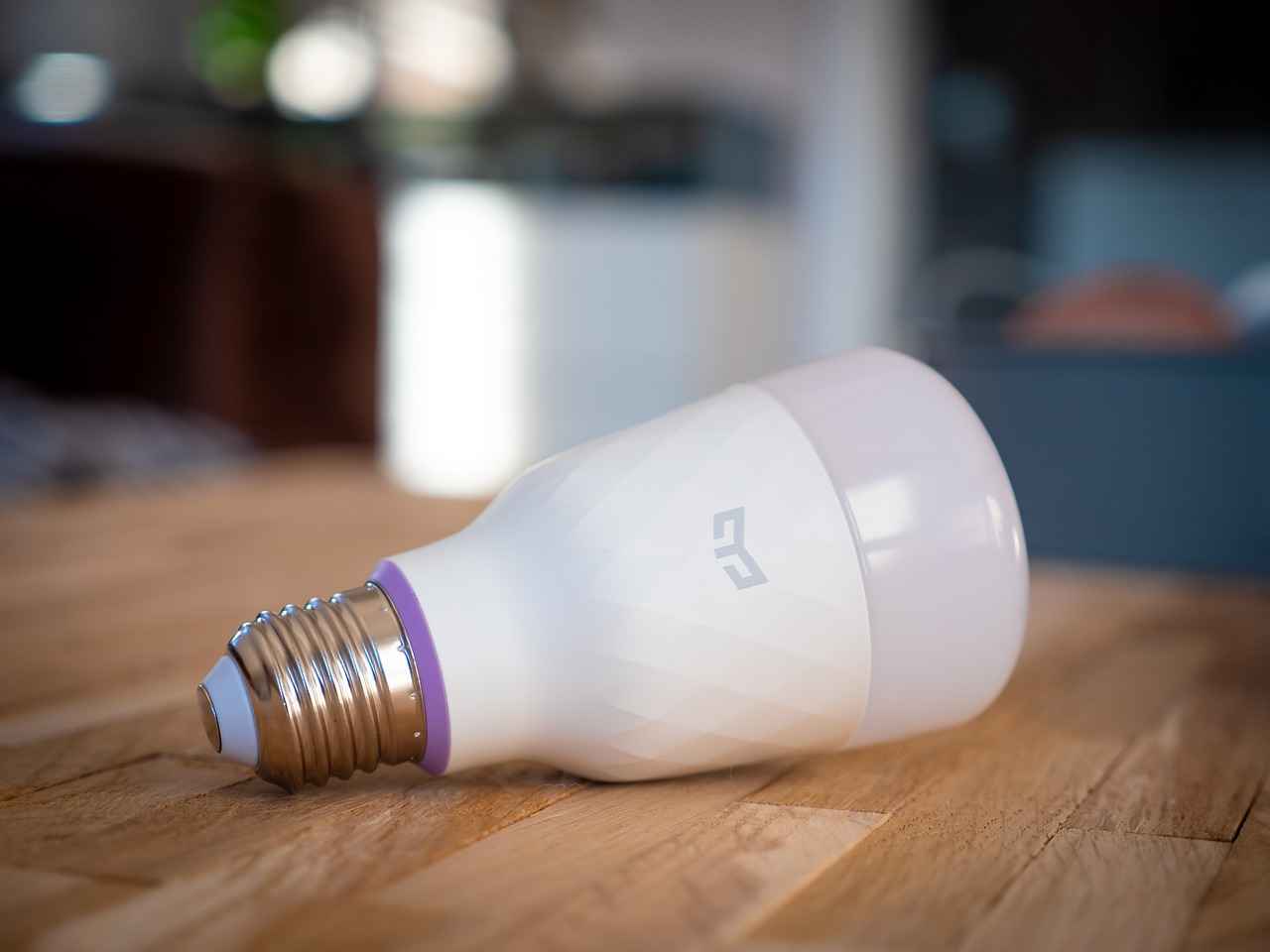Discover how Google Smart Home devices can transform your living space into a hub of automation and convenience. This article delves into the essential products, their features, and practical tips to elevate your smart home experience.
What Are Google Smart Home Devices?
Google Smart Home devices are innovative gadgets designed to enhance home automation. They allow users to control various home functions through voice commands or mobile applications, promoting convenience and efficiency in daily tasks.
Benefits of Using Google Smart Home Devices
- Energy Efficiency: Smart devices optimize energy usage, reducing utility bills and promoting sustainability.
- Enhanced Security: Real-time monitoring and alerts provide peace of mind when you are away from home.
- Improved Convenience: Automating everyday tasks makes life easier and more manageable.
Popular Google Smart Home Devices
- Google Nest Hub: This device serves as a central control unit for all connected devices, allowing seamless management and access to Google Assistant features.
- Google Nest Cam: A smart security camera that offers 24/7 live streaming and alerts for unusual activities around your property.
How to Set Up Google Smart Home Devices
1. Download the Google Home App.2. Follow the app's prompts to connect your devices to Wi-Fi.3. Configure each device for optimal performance.
Tips for Optimizing Your Smart Home Experience
- Utilize Voice Commands: Streamline interactions with smart devices using Google Assistant for hands-free control.
- Create Routines: Set up routines in the Google Home app to automate multiple actions with a single command.
Conclusion: Embrace the Future of Home Automation
Investing in Google Smart Home devices can significantly enhance your living environment, making it more efficient and modern. By understanding their features and benefits, you can enjoy the convenience of automation in your daily life.

What Are Google Smart Home Devices?
Google Smart Home devices represent a significant leap in the realm of home automation, providing users with a seamless way to manage their living environments. These interconnected gadgets allow for the control of various household functions through voice commands or mobile applications, enhancing both convenience and efficiency.
At the core of these devices is the ability to communicate with one another, forming a cohesive ecosystem that can be tailored to individual user needs. For instance, a user can easily adjust the thermostat, control the lighting, or monitor security cameras, all from a single interface. This level of integration simplifies daily tasks and enhances the overall user experience.
One of the key features of Google Smart Home devices is their compatibility with Google Assistant. This voice-activated assistant enables users to execute commands hands-free, making it easier to manage tasks while multitasking. Whether it’s dimming the lights for movie night or adjusting the temperature for optimal comfort, voice commands provide an effortless way to interact with smart technology.
Moreover, these devices offer a range of functionalities that cater to various aspects of home management. For example, smart lighting systems can be programmed to turn on and off at specific times, while smart security cameras provide real-time alerts and monitoring capabilities. This not only enhances convenience but also contributes to improved home security.
In summary, Google Smart Home devices are essential tools for anyone looking to modernize their home. By integrating these devices into daily life, users can enjoy a more efficient, secure, and convenient living environment.

Benefits of Using Google Smart Home Devices
Integrating Google Smart Home devices into your living space provides a multitude of benefits that significantly enhance your lifestyle. These devices not only streamline your daily tasks but also contribute to a more sustainable and secure home environment.
- Energy Savings: One of the most compelling advantages of Google Smart Home devices is their ability to optimize energy consumption. For instance, smart thermostats learn your heating and cooling preferences, adjusting automatically to ensure energy is not wasted when you’re away. This can lead to noticeable reductions in your energy bills.
- Enhanced Security: With smart security cameras and doorbells, homeowners can monitor their property in real-time. These devices send alerts directly to your smartphone when they detect unusual activity, providing peace of mind whether you’re at home or away.
- Improved Convenience: Imagine controlling all your home devices with a simple voice command. Google Assistant allows you to manage lighting, temperature, and even appliances hands-free, making daily routines more efficient. For example, you can set your lights to turn off automatically when you leave the house.
- Customization: Google Smart Home devices offer a high degree of customization. You can create personalized settings and routines that fit your lifestyle, such as programming your coffee maker to start brewing as soon as your morning alarm goes off.
- Integration with Other Smart Devices: These devices work seamlessly with a wide range of other smart products, allowing you to create a cohesive smart home ecosystem. This integration enhances functionality and simplifies device management.
In conclusion, the integration of Google Smart Home devices can transform your living space into a more efficient, secure, and convenient environment. By embracing these technologies, you not only simplify your daily tasks but also contribute positively to energy conservation and home security.
Energy Efficiency
is a crucial aspect of modern living, especially as we become more aware of our environmental impact. One of the most significant advancements in this area comes from the integration of smart home devices. These innovative gadgets not only simplify our daily routines but also play a vital role in reducing energy consumption.
By utilizing advanced algorithms and machine learning, smart home devices can optimize energy usage patterns in real-time. For instance, devices like smart thermostats can learn your habits, adjusting heating and cooling based on when you are home or away. This capability leads to substantial savings on utility bills while also minimizing your carbon footprint.
Furthermore, smart lighting systems allow homeowners to control their lights remotely or set schedules that align with their daily activities. This means lights can automatically turn off when not needed, significantly reducing energy waste. With the ability to dim lights and change colors, these systems also contribute to a more personalized and enjoyable living environment.
Another notable example is smart plugs, which can monitor the energy consumption of connected devices. Homeowners can receive insights into their energy usage, allowing them to make informed decisions about which devices to unplug or replace with more energy-efficient options.
Moreover, the integration of solar panels with smart home technology can lead to even greater energy savings. By monitoring energy production and consumption, homeowners can maximize the use of renewable energy, further enhancing sustainability.
In conclusion, the adoption of smart home devices represents a significant step toward achieving . By optimizing usage patterns and providing valuable insights, these devices not only lower utility bills but also contribute to a more sustainable future. As technology continues to evolve, the potential for further advancements in energy efficiency remains promising.
Smart Thermostats
In the realm of home automation, stand out as one of the most impactful innovations. These devices not only bring convenience to temperature control but also offer significant savings on energy bills. One of the most popular options available today is the Nest Learning Thermostat. This smart thermostat is designed to adapt to your lifestyle, learning your daily routines and preferences.
The Nest Learning Thermostat uses advanced algorithms to analyze your behavior. For instance, it can detect when you are home or away, adjusting the temperature accordingly to maximize energy efficiency. When you leave your home, it automatically lowers the temperature to save energy, and when you return, it brings the temperature back to your preferred setting. This capability not only enhances comfort but also contributes to reducing your carbon footprint.
Additionally, smart thermostats can be controlled remotely through mobile apps. This feature allows users to adjust their home’s temperature from anywhere, ensuring that you can always return to a comfortable environment. Many models also offer energy usage reports, providing insights into your heating and cooling habits, which can help you make informed decisions about energy consumption.
Another advantage of smart thermostats is their compatibility with other smart home devices. They can be integrated with smart lighting and security systems, allowing for comprehensive home automation. For example, you can set routines that adjust the thermostat when you lock your doors at night, promoting both security and energy savings.
In conclusion, investing in a smart thermostat like the Nest Learning Thermostat can lead to substantial energy savings and increased comfort in your home. As technology continues to evolve, these devices will likely offer even more features, making them a worthwhile addition to any smart home setup.
Smart Lighting
has revolutionized the way we illuminate our homes, offering a range of features that enhance convenience and energy efficiency. With the advent of smart bulbs, homeowners can now control not just the brightness but also the color of their lighting, creating the perfect ambiance for any occasion.
One of the most compelling features of smart bulbs is their ability to set schedules. This means you can program your lights to turn on or off at specific times, ensuring that your home is well-lit when you need it and saving energy when you don’t. For example, you can program the lights to turn off automatically when you leave for work and turn back on just before you return home.
Moreover, smart bulbs can significantly contribute to reducing energy consumption. By using features like motion sensors and remote control via mobile apps, you can ensure that lights are only on when needed. This is not only beneficial for your utility bills but also for the environment, as it reduces the overall energy demand.
Additionally, smart bulbs can be integrated with other smart home devices, allowing for a seamless automation experience. For instance, you can connect your smart bulbs to your smart thermostat, ensuring that lights adjust based on the time of day or your presence in the room. This interconnectedness enhances your overall smart home experience.
In summary, is a key component of modern home automation. By allowing you to control brightness and color, set schedules, and reduce energy consumption, smart bulbs provide both convenience and sustainability. Investing in smart lighting can transform your living space into a more efficient and enjoyable environment.
Improved Security
is one of the most significant advantages of integrating Google Smart Home devices into your living space. These innovative devices not only provide convenience but also enhance your home’s safety through various features.
Google Smart Home devices, such as the Google Nest Cam and Google Nest Doorbell, offer real-time monitoring capabilities that keep homeowners informed about their property’s security status. With 24/7 live streaming, you can easily check in on your home from anywhere using your smartphone or tablet. This feature is particularly beneficial for those who travel frequently or have busy schedules.
Moreover, these devices send instant alerts to your phone when they detect any unusual activity, such as movement in restricted areas or unexpected sounds. This immediate notification system allows homeowners to respond quickly to potential threats, ensuring their property remains safe even when they are away.
In addition to monitoring, Google Smart Home devices can be integrated with other security features. For instance, you can connect your smart locks and lights to create a comprehensive security system. By setting up automated routines, you can have your lights turn on and off at specific times, simulating occupancy and deterring potential intruders.
Another aspect of improved security is the ability to communicate with visitors through devices like the Google Nest Hub. This smart display allows you to see and speak with anyone at your door, providing an added layer of security without having to open the door.
Overall, Google Smart Home devices significantly enhance home security through real-time monitoring, alerts, and integration with other smart features. By investing in these technologies, homeowners can enjoy peace of mind, knowing their home is well-protected.

Popular Google Smart Home Devices
In the ever-evolving world of technology, Google Smart Home devices have emerged as essential tools for enhancing convenience and efficiency in our daily lives. These devices not only offer automation but also integrate seamlessly with various aspects of home management.
Here are some of the standout devices that cater to diverse automation needs:
- Google Nest Hub: This device acts as a central command center for your smart home. With its intuitive touchscreen, you can easily control all your connected devices, view live security feeds, and access Google Assistant functionalities. The Nest Hub also features a built-in display that showcases photos, weather updates, and calendar events.
- Google Nest Cam: A vital part of your home security, the Nest Cam provides 24/7 live streaming and sends alerts directly to your smartphone. Its advanced motion detection ensures that you are always informed of any unusual activities, giving you peace of mind whether you’re at home or away.
- Google Nest Learning Thermostat: This smart thermostat learns your schedule and preferences, automatically adjusting the temperature to optimize energy usage. By doing so, it helps you save on energy bills while maintaining a comfortable living environment.
- Philips Hue Smart Bulbs: These smart lighting solutions allow you to control brightness and color through your smartphone or voice commands. You can set schedules to ensure lights are turned off when not in use, contributing to energy savings.
- Google Nest Protect: This smart smoke and carbon monoxide detector provides voice alerts and sends notifications to your phone if it detects any danger. Its advanced sensors ensure your home remains safe and secure.
Each of these devices brings unique features to the table, making them ideal for different home automation needs. By integrating these products into your home, you can enhance your living space’s functionality and security.
In conclusion, the Google Smart Home ecosystem offers a range of devices that cater to various automation preferences. By choosing the right combination of devices, you can create a smart home that not only simplifies your life but also enhances your overall living experience.
Google Nest Hub
The is an innovative device designed to revolutionize the way you interact with your smart home. Serving as a central control unit, it allows users to seamlessly manage all connected devices, view security feeds, and access Google Assistant features with just a few simple voice commands or taps on the screen.
One of the standout features of the Nest Hub is its intuitive touchscreen interface. This display not only shows you real-time information about your smart devices but also provides a visually appealing way to interact with your home automation system. You can easily adjust your smart thermostat, control your smart lights, and even check in on your security cameras, all from one convenient location.
Moreover, the Google Assistant integration means you can ask questions, set reminders, and control your devices hands-free. This functionality is particularly beneficial when your hands are full or when you simply want to streamline your daily tasks. For example, you can say, “Hey Google, turn off the living room lights,” and the Nest Hub will execute your command without you needing to lift a finger.
In addition to device management, the Nest Hub also functions as a digital photo frame. When not in use, it can display your favorite pictures, adding a personal touch to your living space. The device’s ability to integrate with various streaming services also allows you to enjoy music, podcasts, or even video content directly on the screen.
In conclusion, the serves as an essential component of any smart home setup. Its ability to consolidate control, enhance security, and provide entertainment makes it a valuable addition for anyone looking to embrace home automation. With the Nest Hub, managing your smart home has never been easier or more enjoyable.
Google Nest Cam
is a cutting-edge smart security camera designed to provide homeowners with enhanced safety and peace of mind. This device offers 24/7 live streaming capabilities, ensuring that you can monitor your property from anywhere at any time. With its advanced features, the Google Nest Cam stands out as a reliable option for modern home security.
One of the key benefits of the Google Nest Cam is its ability to send real-time alerts directly to your smartphone. These alerts notify you of any unusual activities detected by the camera, allowing you to respond promptly. Whether it’s a package delivery or a potential security threat, you’ll always be informed.
- High-Definition Video Quality: The camera records in 1080p HD, providing clear and detailed footage.
- Night Vision: Equipped with infrared technology, the Nest Cam can capture clear images even in low-light conditions.
- Two-Way Audio: Communicate directly through the camera with its built-in microphone and speaker, allowing you to interact with visitors or deter intruders.
The installation process for the Google Nest Cam is straightforward. Simply mount the camera in a suitable location, connect it to your Wi-Fi network, and configure it using the Google Home app. This app not only facilitates the setup but also allows you to manage your camera settings and view live feeds effortlessly.
In conclusion, the is an essential addition to any smart home system. Its combination of advanced features, ease of use, and real-time monitoring capabilities makes it a top choice for homeowners seeking to enhance their security. By investing in this smart camera, you can ensure that your home remains protected, giving you the freedom to focus on what truly matters.

How to Set Up Google Smart Home Devices
Setting up Google Smart Home devices is a simple and efficient process that can significantly enhance your living experience. By following a few straightforward steps, you can connect and configure each device to ensure optimal performance and seamless integration within your smart home ecosystem.
Step 1: Download the Google Home App
The first step in setting up your Google Smart Home devices is to download the Google Home app. This app is available on both iOS and Android platforms and serves as the central hub for managing all your smart devices. Once installed, open the app and sign in with your Google account.
Step 2: Connect Your Devices
After setting up the app, you can begin connecting your devices. Follow these steps:
- Ensure your smart devices are powered on and in pairing mode.
- In the Google Home app, tap on the ‘+’ icon to add a new device.
- Select the type of device you are adding and follow the on-screen instructions to connect it to your Wi-Fi network.
Step 3: Configure Device Settings
Once connected, you can customize the settings of each device. This includes naming your devices for easy voice control and adjusting preferences for notifications and alerts. Take advantage of the app’s features to set up routines and automation that fit your lifestyle.
Step 4: Test Your Setup
After configuration, test the functionality of your devices. Use voice commands through Google Assistant or the app to ensure everything is working correctly. If any issues arise, the app provides troubleshooting tips to help you resolve them.
Conclusion
By following these steps, setting up Google Smart Home devices can be a quick and rewarding experience. Embrace the convenience of automation and enjoy a more connected and efficient home.
Download the Google Home App
The Google Home app is a crucial tool for anyone looking to streamline their smart home experience. It serves as the central hub for managing all your connected devices, making it easier than ever to control your home environment. With its user-friendly interface, the app allows you to configure settings, monitor device status, and execute commands with just a few taps on your smartphone.
To get started, simply download the Google Home app from the Google Play Store or the Apple App Store. Once installed, follow these steps:
- Create or Sign in to Your Google Account: If you don’t already have a Google account, you will need to create one. If you do, simply sign in.
- Connect to Your Wi-Fi Network: Ensure your smartphone is connected to the same Wi-Fi network you intend to use for your smart devices.
- Add Devices: Tap on the “+” icon in the app to add new devices. The app will guide you through the process of connecting each device to your network.
- Customize Settings: Once your devices are connected, you can customize settings such as device names, room assignments, and automation routines.
Moreover, the Google Home app enables you to group devices by rooms, making it easier to control multiple devices simultaneously. For example, you can create a “Living Room” group that includes your smart lights, thermostat, and speakers, allowing you to manage them all with a single command.
In addition to device management, the app also integrates with Google Assistant, letting you use voice commands for hands-free control. This feature enhances convenience, enabling you to adjust settings or check device status without needing to open the app.
In conclusion, the Google Home app is an indispensable resource for anyone looking to optimize their smart home setup. By following the steps outlined above, you can ensure a smooth and efficient integration of your smart devices, paving the way for a more automated and convenient lifestyle.
Connecting Devices
to your Google Smart Home ecosystem is a crucial step in creating a seamless and efficient automated environment. By following the app’s prompts, you can easily link your devices to your Wi-Fi network, ensuring they communicate effectively with each other. This process not only enhances the functionality of each device but also allows for centralized control, making your smart home experience more enjoyable.
To begin, ensure that you have the Google Home app installed on your smartphone or tablet. This app serves as the control hub for all your smart devices, providing a user-friendly interface to manage settings and configurations.
- Step 1: Open the Google Home app and tap on the “+” icon to add a new device.
- Step 2: Select “Set up device” and choose whether you are adding a device from a new home or an existing one.
- Step 3: Follow the on-screen instructions to ensure your device is powered on and in pairing mode.
- Step 4: The app will search for nearby devices. Once your device appears, select it to begin the connection process.
- Step 5: Enter your Wi-Fi network credentials when prompted, ensuring you input the correct password for a successful connection.
- Step 6: Once connected, you may be asked to assign the device to a specific room for easier management.
After completing these steps, your devices will be linked, allowing for seamless communication and control. You can now use voice commands via Google Assistant or the app to manage your devices effortlessly. This connection is vital for creating automations, such as setting routines or controlling multiple devices simultaneously.
In conclusion, connecting your devices through the Google Home app is a straightforward yet essential process that enhances your smart home experience. By ensuring all devices are properly linked, you can leverage the full potential of home automation, making your life easier and more efficient.

Tips for Optimizing Your Smart Home Experience
To fully leverage the capabilities of your Google Smart Home devices, it’s essential to implement practical strategies that enhance both functionality and user experience. Here are some effective tips:
- Utilize Voice Commands: Harness the power of Google Assistant by using voice commands to control your devices. This hands-free approach not only saves time but also adds convenience to your daily routines.
- Create Custom Routines: Set up personalized routines in the Google Home app. For instance, you can create a “Good Night” routine that turns off all lights, locks doors, and adjusts the thermostat with a single command.
- Group Devices: Organize your devices into groups for easier control. For example, you can group all living room lights together, allowing you to turn them on or off simultaneously with a single command.
- Regularly Update Firmware: Ensure that your devices are running the latest firmware. Regular updates can improve performance, add new features, and enhance security.
- Optimize Wi-Fi Connectivity: Place your router in a central location to improve the connectivity of your smart devices. Consider using Wi-Fi extenders if your home has dead zones.
- Explore Third-Party Integrations: Many Google Smart Home devices support third-party integrations. Explore compatible apps and services that can further enhance your home automation experience.
- Monitor Energy Usage: Utilize energy monitoring features to track your consumption. This can help you identify areas where you can save energy and reduce costs.
- Customize Notifications: Set up personalized alerts to stay informed about your home’s status. Whether it’s a notification about a door being left open or a reminder to adjust the thermostat, these alerts can enhance your peace of mind.
By applying these tips, you can significantly enhance the functionality of your Google Smart Home devices, making your living environment more efficient and enjoyable.
Utilize Voice Commands
Utilizing voice commands through Google Assistant is a game-changer in the realm of smart home technology. This feature not only enhances the convenience of managing various devices but also significantly improves the overall user experience.
With voice commands, you can control your smart devices effortlessly. Whether it’s adjusting the thermostat, dimming the lights, or playing your favorite music, a simple voice request can execute these tasks in seconds. This hands-free operation is particularly beneficial when your hands are full or when you are in a different room.
Moreover, voice commands allow for quick access to information and functions. For instance, you can ask Google Assistant about the weather, set reminders, or even control your smart appliances without needing to navigate through apps or physical buttons. This level of accessibility can make daily routines smoother and more efficient.
Additionally, the integration of voice commands with smart home routines can automate multiple tasks with a single phrase. For example, saying “Goodnight” can trigger a routine that turns off all lights, locks the doors, and adjusts the thermostat to your preferred sleeping temperature. This not only saves time but also enhances security and energy efficiency.
In conclusion, utilizing voice commands through Google Assistant is an essential aspect of modern smart home management. It simplifies interactions with your devices, promotes hands-free convenience, and allows for seamless automation of daily tasks, ultimately leading to a more efficient and enjoyable living environment.
Create Routines
in the Google Home app is a powerful feature that allows you to automate various tasks with a single voice command or tap. This functionality not only streamlines your daily activities but also enhances your overall smart home experience.
By setting up routines, you can combine multiple actions into one seamless command. For example, you can program a routine named “Good Night” that turns off all the lights, lowers the thermostat, and locks the doors when you say, “Hey Google, good night.” This level of automation not only saves time but also promotes energy efficiency and security.
Here are some practical steps to create effective routines:
- Open the Google Home App: Start by launching the app on your smartphone or tablet.
- Navigate to Routines: Tap on the Routines option, usually found in the settings menu.
- Create a New Routine: Click on the Add button to start setting up a new routine.
- Select Actions: Choose from a variety of actions such as adjusting lights, playing music, or setting alarms.
- Set a Trigger: Decide how you want to activate this routine—through voice command, a specific time of day, or even when you arrive home.
- Save Your Routine: Once you have configured all desired actions and triggers, save your routine for future use.
Benefits of Using Routines include:
- Time-Saving: Execute multiple commands with a single phrase.- Energy Efficiency: Automate lights and appliances to reduce unnecessary power usage.- Enhanced Security: Program routines to secure your home when you are away.
In conclusion, utilizing routines in the Google Home app can significantly enhance your smart home experience by simplifying daily tasks and improving efficiency. Embrace this feature to enjoy a more automated and convenient lifestyle.

Conclusion: Embrace the Future of Home Automation
Investing in Google Smart Home devices can significantly transform your living space, creating a modern and efficient environment that caters to your lifestyle needs. With the rapid advancements in technology, understanding the features and benefits of these devices is crucial for enhancing your daily life.
Google Smart Home devices are designed to work seamlessly together, offering a level of automation that simplifies everyday tasks. From controlling your lights to managing your home security, these devices provide a level of convenience that was unimaginable just a few years ago. By integrating these devices into your home, you can enjoy a smart living experience that allows for greater efficiency and comfort.
One of the most significant advantages of using Google Smart Home devices is the ability to save energy. Smart thermostats, for example, learn your habits and adjust heating and cooling accordingly, ensuring that energy is not wasted when you are away. Similarly, smart lighting can be programmed to turn off automatically, reducing electricity consumption and lowering your utility bills.
Moreover, the security features offered by these devices cannot be overlooked. With devices like the Google Nest Cam, homeowners can monitor their properties in real-time, receiving alerts about any unusual activity. This level of security provides peace of mind, especially for those who travel frequently or spend long hours away from home.
In conclusion, embracing the future of home automation with Google Smart Home devices can lead to a more convenient, secure, and efficient lifestyle. By understanding and leveraging the capabilities of these devices, you can significantly enhance your quality of life, making everyday tasks simpler and more manageable.
Frequently Asked Questions
- What devices are considered Google Smart Home devices?
Google Smart Home devices include a variety of products such as smart speakers, smart displays, smart thermostats, smart bulbs, and security cameras. These devices work together to create a seamless automated experience in your home.
- How do I set up my Google Smart Home devices?
Setting up your Google Smart Home devices is easy! Simply download the Google Home app, connect your devices to your Wi-Fi network, and follow the prompts to configure each device for optimal performance.
- Can I control Google Smart Home devices with my voice?
Absolutely! You can control your Google Smart Home devices using voice commands via Google Assistant. Just say “Hey Google” followed by your command, and watch your devices respond!
- Are Google Smart Home devices energy-efficient?
Yes, many Google Smart Home devices are designed to be energy-efficient. For example, smart thermostats learn your habits and adjust temperatures automatically, helping you save on energy bills.
- What is the benefit of creating routines?
Creating routines in the Google Home app allows you to automate multiple actions with a single command. For instance, you can set a routine to turn off all lights and lock doors when you say “Goodnight.”














